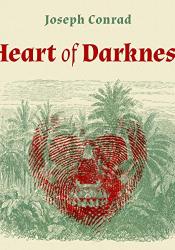(1899) "The Heart of Darkness" by Joseph Conrad
In the essay "Two Visions in Heart of Darkness," Edward Said examines the white, imperial narrative bias of Marlow and Kurtz, two white men who travel deep into the African jungle to obtain the land's resources such as ivory. The novel, while fictitious, reflects an accurate portrayal of European imperialism that occurred in the late 19th century. Therefore, the novel was challenged by critics such as Chinua Achebe and Edward Said, who claimed that both the celebration of imperialism and the ackowledgement of its horrors could be found in the novel. Joseph Conrad's intentions are still up for interpretation, which creates another challenge in interpreting the novel as a material work. Regardless of position, the academic conversation around Heart of Darkness exemplifies the growing complexity and power of the novel around the time of publishing in 1899. By this point, the novel had proven itself as a trustworthy mode of literary expression.
Said, Edward. “‘Two Visions in Heart of Darkness.’” Joseph Conrad's "Heart of Darkness", by Harold Bloom, Bloom's Literary Criticism, 2009, pp. 5–18.

